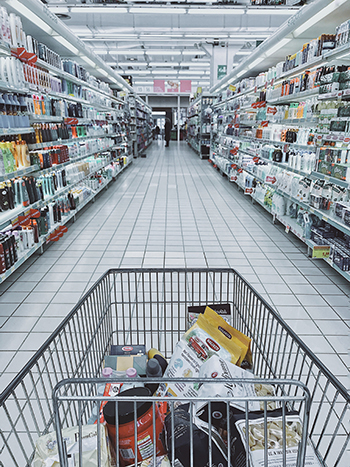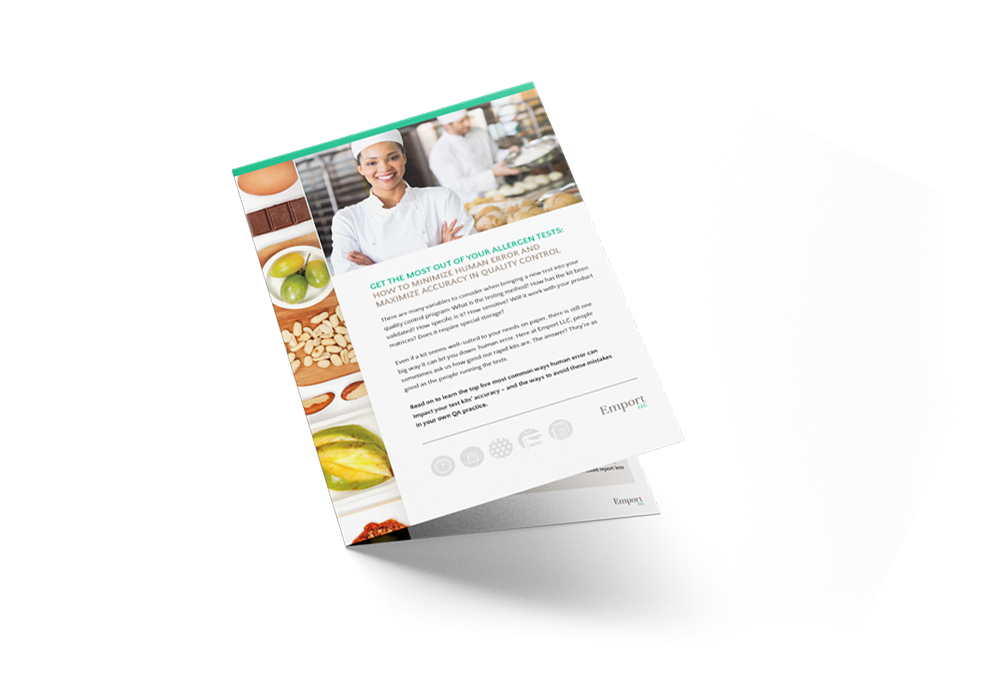
Living with food allergies carries an expensive price tag.
On average, over $25 billion per year is spent on trips to the emergency room, purchasing specialty foods, and doctor’s visits, etc. It is imperative that shoppers can trust food product labels’ allergen warnings, but those labels can be very confusing.
Cross-contamination and poor manufacturing practices can result in allergic reactions – so what’s a shopper with food allergies to do? Here are some guidelines for reading and interpreting allergy warnings on food labels in the United States.
Food Allergies and Legislation
Steering clear of the Big-8 allergens (egg, soy, wheat, milk, tree nuts, peanuts, fish and crustacean) is simplified as a result of mandatory labeling of the USA Food Allergen Labeling and Consumer Protection Act (FALCPA). Despite these great efforts to protect consumers from exposure to allergens, it is simply not possible to reduce one’s risk to zero.
As consumers, we’ve seen the PAL disclaimers, “May contain”, “Processed on” or “Made in a Facility that Processes”, on the labels of our favorite food items. This is because FALCPA only addresses allergens knowingly included in foods. It does not address accidental traces of allergens from cross-contact, except to say that Good Manufacturing Practices (GMPs) should be followed at all times. In recognition of the fact that it is impossible to remove all contaminants, Precautionary Allergen Labeling (PAL) was designed to communicate risk of exposure to allergens to vulnerable consumers. Despite being well-intentioned, these disclaimers are completely voluntary and unregulated, a fact that surprises most consumers who assume precautionary labeling is mandatory.
Why PAL Confuses Consumers
“Contains” statements for each big-8 allergen are required by FALCPA, but “May Contain” statements are voluntary.
Misconceptions about precautionary labeling are common among consumers. Many consumers presume a product with the label reading, “Not suitable for” carries a higher risk than a label reading, “Processed in a facility with…” In truth, there is absolutely no relation between the wording of the label and the level of potential risk involved. Companies are free to include any advisory statements they deem necessary, worded in whatever way they deem fit.
A 2015 review article from the EJACI (European Journal of Allergy and Clinical Immunology) with supported data acquired from FARRP (Food Allergen Research & Resource Program), shows that over half of consumers and clinicians would benefit from unified label wording and a risk hierarchy. In other words, simplifying the wording of label statements and providing an actual level of risk would be of great value. Consumers who purchase food with a false sense of security may feel they’ve been duped when they or their children have a reaction. Those who’ve been burned by inaccurate or misleading labels can feel anxiety about buying safe food for their families.
PAL Professionals Talk
To date, PAL stakeholders – dieticians, patients, auditors and food industry executives – do not agree on appropriate reference doses and procedures following exposure. This means that trained professionals can’t collectively decide on the amount of allergen residue that must be present to produce a potential threat. Therefore, treatment solutions are not consistent. The lack of standards has lead to confusion among trained health care professionals who also misinterpret PAL’s purpose. Some health professionals believe consumers should avoid products with PAL descriptions only if they have a serious reaction to small amounts of residue from a particular allergen.
In conclusion
The current, unregulated and unstandardized PAL system leaves individuals and families with children sensitive to allergens without a clear understanding of their actual risks. This lack of consistency and transparency on food labels establishes anxiety at the grocery store for vulnerable families and an unacceptable amount of uncertainty regarding actual risk of exposure to harmful allergens. Allergic consumers are used to reading labels once, twice, or as many times as necessary, but they must be given tools to properly assess the potential risk. Only through standardization of food labeling will food manufacturers be able to accurately communicate risk of exposure to contamination at the national and global level.
This is the first installment of a two-part series on Precautionary Allergen Labeling. The next installment will focus on how manufacturers should think about PAL, while keeping in mind the average consumer.
Read the second part of this two-part post: Manufacturers and precautionary labeling: when good manufacturing practices aren’t enough

Need to test for gluten at home?
Commercial-quality, user-friendly. Clear results in less than 20 minutes.


